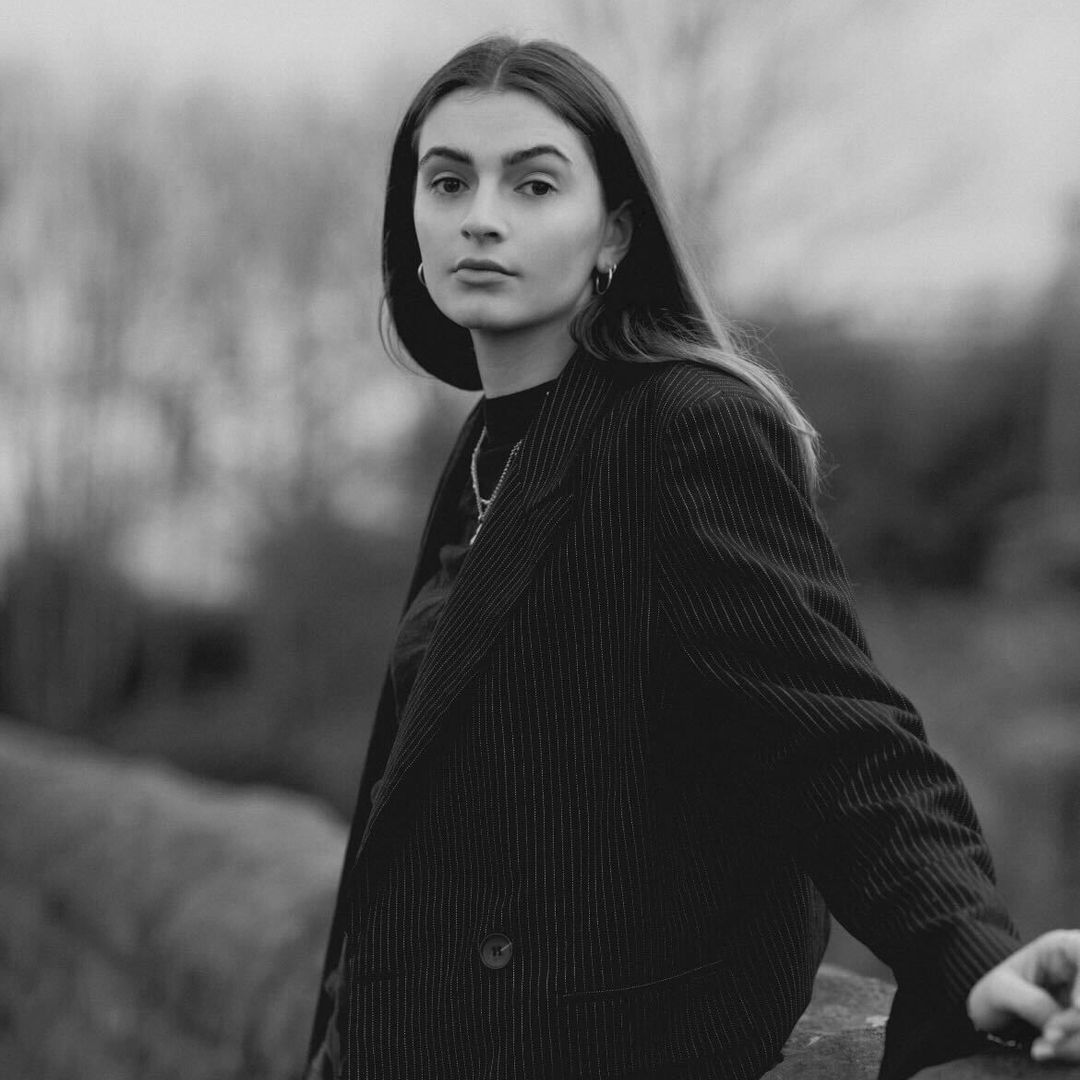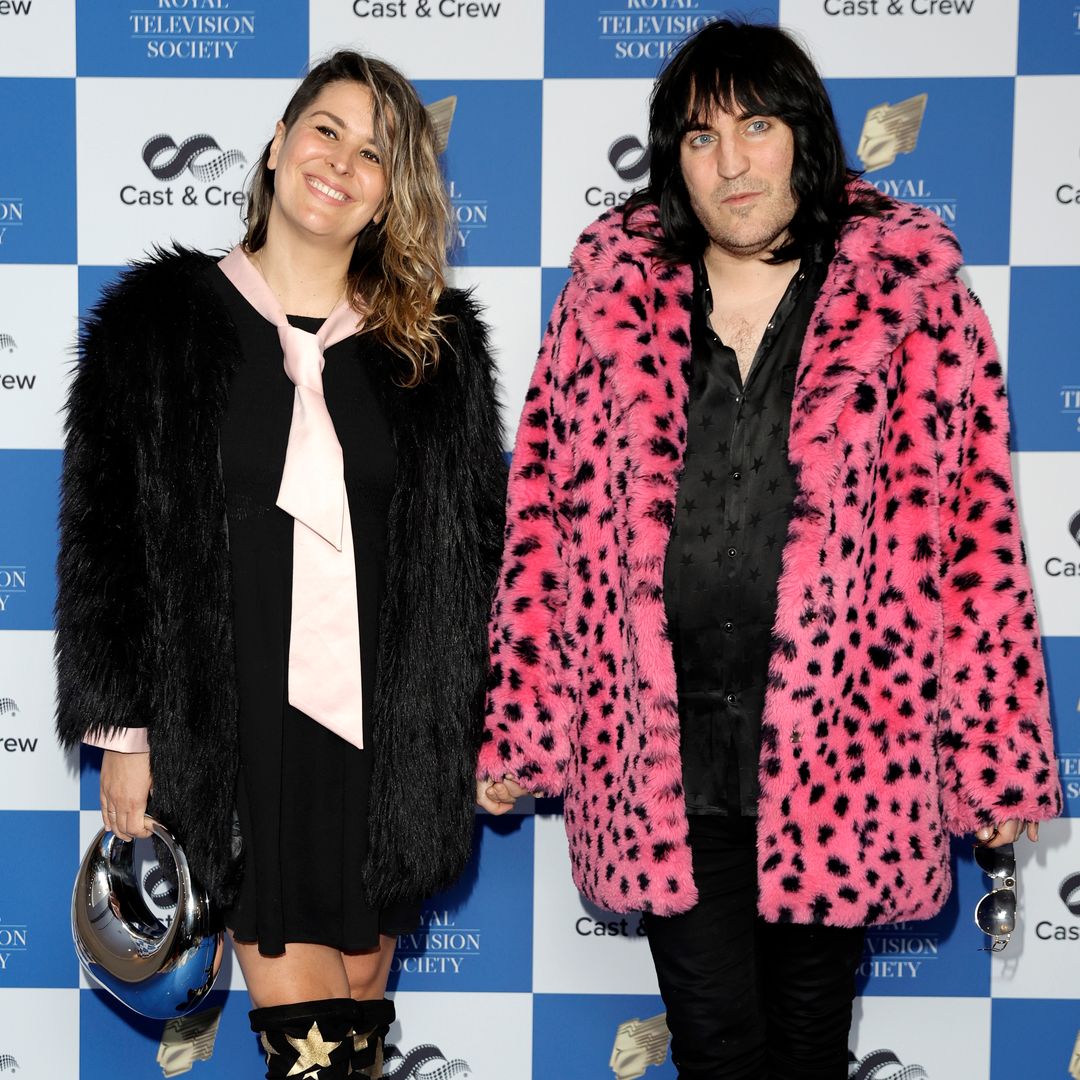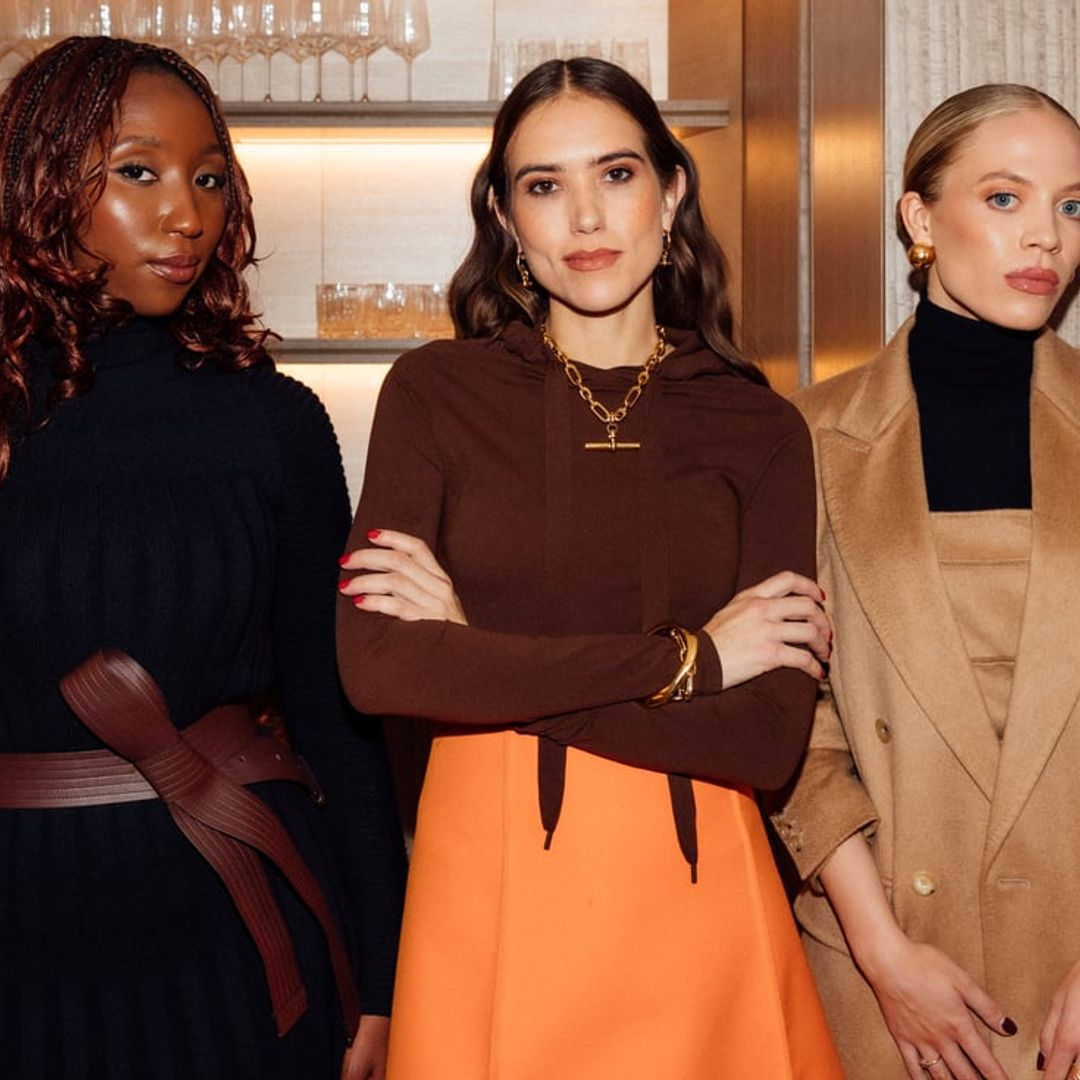If two members of the Gestapo hadn't momentarily turned their backs for a cigarette break in 1939, Ruth Posner probably would not be speaking with me today.
Born in Warsaw in 1930 to secular Jewish parents, Ruth began her extraordinary life under an increasing veil of antisemitism. Now, the Holocaust survivor sits in her study, a room lined with posters and clippings from her acting days, as well as a towering bookshelf – a nod to her lifelong trade in storytelling.
Actress, dancer and Holocaust survivor Ruth Posner
To mark Holocaust Memorial Day, the 93-year-old has partnered with Holocaust Educational Trust to share her story in the hope that current and future generations never forget the horror of the Shoah – especially in the wake of rising antisemitism.
"How much do you want me to tell you about my life?" she asks, so we start at the beginning.
Ruth's experience of antisemitism as a young girl
Growing up, Ruth says she had two identities. As a young girl, she considered herself Jewish but primarily thought herself a Pole. She attended a Catholic school, the only Jewish student enrolled, and fully immersed herself in Polish traditions. Her mother was a fashion designer and her humanist father was a local government official. Both were murdered in Treblinka.
Ruth was born into a secular Jewish family in 1930
Ruth's first experience of antisemitism occurred when she was a schoolgirl. "I never denied my Jewishness, but I wasn't that involved. So, it was a terrible shock, when very near the outbreak of war in 1939, I was outside playing, and a girl came up to me and said: 'You are a Jew! You killed our Lord, and you should be punished! ' It was an utter shock. I couldn’t believe what I was hearing. I ran home to my mother crying, she tried to pacify me. I didn't understand what was happening."
Ruth as a young girl with her father
Like millions of Jews, the former actress' life took a drastic turn following the outbreak of the Second World War. One day, two Gestapo men came to Ruth's family home and gave the family fifteen minutes to pack their things and leave. She recalls: "They had guns. My mother, who was an incredible woman with a heart of gold, said something very innocent to one of the Gestapo. She said: 'You wear a black uniform, but surely your heart isn’t black.' The man swiped her and hit her. That was my first introduction to that kind of behavior. We had to leave. We left our home, and we were led to a ghetto."
Ruth moves to the Radom ghetto
In the Radom ghetto, a young Ruth first encountered Hasidic Jewish culture. She recalls seeing men with payots and kippahs, in addition to hearing the cries of her brethren being loaded into trucks and taken away. Her experience was a stark reminder that the Nazis did not care if you went to synagogue or kept kosher. Jews were a homogenous race to be exterminated.
German soldiers rounding up Jews in the Warsaw Ghetto in 1943
Determined to keep his daughter safe, Ruth's father obtained a false passport for his only child with the help of his Catholic friends. He then arranged for Ruth and her aunt Lola to work as slave laborers in a leather goods factory. Ruth was beaten, but she notes it was still better than being in the ghetto.
The next segment of Ruth's story is truly astonishing.
Ruth's chance escape from the Nazis
"The Germans were very conscious of hygiene," she chuckles, as she recounts her escape. "The conditions were bad in the factory, so the Germans would take us and march us down the street to very close by bath houses to get rid of fleas and lice. The bathhouse was on the edge of the ghetto. Opposite it was the Aryan side. If you wanted to dare escape, you had to find a way of finding the road to the other side."
Star of David attached to a street car in the Warsaw ghetto circa 1939-43
"My aunt said we won't escape today; we would do it next week. I remember her words: 'It's dangerous. If we are seen, we will be shot. But if we stay here, it will be certain death. Trying to cross the street, it's a probable death.' I was about thirteen at the time. This is what we did."
Two Gestapo came together to light a cigarette. Ruth and her aunt slipped off their Star of David armbands and walked across the road without detection.
The squalid ghetto landscape and sound of Nazi gunfire seem very far away while speaking with Ruth today, dressed in a modest black turtleneck and a silver necklace portraying a Hindu deity. It's difficult to conjure images of her as a teenager slipping away behind the backs of the Nazis. "My life consists of many strange coincidences, and this was the start of incredible luck."
Ruth describes the horrors of war
Upon her escape, Ruth's binary identity gained another layer. To evade recapture, she changed her name to Irena Slabowska as Ruth is a biblical Jewish name, and hid with a Catholic family. The dawn of the Warsaw Uprising catalyzed yet another dramatic rift in Ruth's adolescence. She was imprisoned as a Polish Catholic in Germany and subsequently put on a train to Essen where the Allies were bombing.
Aged thirteen, the aspiring dancer escaped the ghetto with her aunt
Now persecuted as a Pole, Ruth described the horrors she witnessed as she fled from the falling bombs. "We started to hear airplanes and bombs falling. The Allies' planes landed and the machine guns came out. I couldn’t find my aunt for quite some time. Many people died. There were dead bodies lying around. Everyone was running. The Germans were running. We were running. I found my aunt and we came to a hut, and we found German farmers. We said we are prisoners of war and asked if they could give us some water. They had no idea we were Jews. We offered to work for them, I learned how to milk cows and they kept us!"
A slice of bacon led to the next stroke of luck in Ruth's tale. After liberation, the pair were taken to a compound by the Allies still under the guise of being Catholic, where Ruth's aunt Lola unknowingly served a Jewish RAF Squadron leader breakfast which consisted of bacon and eggs. The soldier's rejection of the meat immediately revealed his Jewish identity and upon picking up on Ruth's aunt's shocked reaction, he confided in her that he was looking for hidden Jews and if she might know where any were. Squadron leader Scott ensured Ruth was put on the Kindertransport to England, her new home, while her aunt ventured to Brussels to find her few surviving family members.
Ruth's personal tragedy at the hands of the Nazis
Ruth's entire family, including her parents, uncles, most aunts, and cousins were all murdered.
Treblinka concentration camp, where Ruth's parents were murdered
Ruth has retained a calm and stoic manner while detailing her harrowing childhood memories. Yet, pure fury begins to simmer in her tone. "This evil was the worst thing of humanity. I don't like to talk about it, but I just have to tell you. My aunt's children aged eight and six didn’t even know they were Jews. They didn’t come from a religious home they were being hidden by a farmer. I don’t know and will never know exactly what happened, but somebody denounced them. Not the farmer, but somebody else who knew they were Jewish kids in hiding. At six and eight old were taken out and shot."
She begins to cry.
"To take kids and shoot them, who don’t even know what they are – I will never forgive for that. And I will always talk about it."
"I carry this burden in my heart all the time because I have no family. I didn't want to talk about my experience, and I didn’t want people to feel sorry for me. But what made me talk about it and even scream about it, is the resurgence of antisemitism. People say it didn’t exist. It's because the trouble we have with Palestine and Israel, how Judaism has been mixed with those complex issues, it has fuelled antisemitism. I said, no. Now, I am going to scream about it wherever possible. I am going to talk about it."
Ruth on antisemitism today
A large issue Jews face today is the conflation of Zionism and Judaism, which in turn leads to the justification of antisemitism. Ruth does not shy away from the convoluted topic.
"People see Jews as one entity instead of individual people. It's such a mistake. A terrible mistake. People think Jews are money grabbers. But wait a minute, Jews, for a long time, were not allowed to own land or do certain professions. They could deal with money so yes, they developed skills. But it doesn’t necessarily mean we’re all rich."
Ruth pursued a successful career in acting upon her escape from Germany
"This business of generalisation is so dangerous. People must learn this and open their minds. I have family members who live in Israel who are very critical of things happening in the country. But also, they understand how difficult the situation is. There are Jews who are not even interested in Israel because they do not connect with it. The comedian David Baddiel says he's not interested in Israel because he is not Israeli. Just because I am Jewish, do not put me in that bag or blame me for what happens there."
Children of the Hitler Youth circa 1935
Her plea not to generalise about communities extends to Germans: " I find it very difficult to make a comment about generalities. I was in a play about the Second World War, and we were invited to perform it in Germany. People said: 'You're going to Germany? How can you?' And I said: 'Yes, I am going to Germany. It's a whole new generation now.' We performed the play at universities in many different towns. The chancellor of one university came out to greet me and said: 'You don’t know what this means to me for you to be here. I was a Hitler Youth during the war. I wore the swastika. I was very proud of my uniform. I was eight years old. We must go through this and learn from it and change the world we live in."
Ruth has partnered with Holocaust Education Trust to share her remarkable story
"So, therefore, when Jewish people say: 'Oh I could never go to Germany.' No – you cannot generalise. There was a certain culture that created what was created in the war. But not every individual subscribes to that. You cannot generalise about Jews or Germans or anyone else. We are people. We have different characters. Different proclivities."
The Holocaust Educational Trust's key proverb hangs in my mind. The Holocaust didn’t start in the gas chambers – but with words.
Before offering up an impassioned parting note to stay positive and fight generalisation, Ruth looks to the future "There is hope when I meet young people, who are just working in order to make the world a better place. In order to understand what happened and take care that it shouldn't happen again. To me, that is the most important thing."
Ruth Posner BEM shares her testimony in schools and colleges across the UK through the Holocaust Educational Trust’s Outreach Programme, which gives tens of thousands of young people every year the unique opportunity to hear the first-hand testimony of Holocaust survivors. The Holocaust Educational Trust works in schools, colleges, workplaces and communities across the UK, ensuring that everyone everywhere has the opportunity to learn about the Holocaust. Find out more about the work of the Trust at www.het.org.uk



















